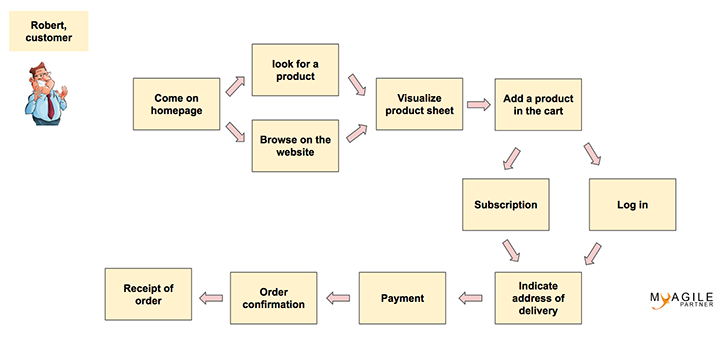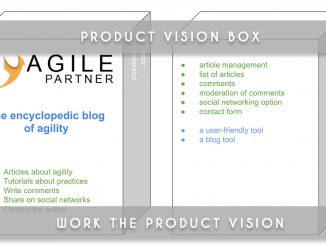
The roadmap chart is a crucial tool for managing your product and gaining insight into its progress. Let’s explore how to effectively represent this type of chart.
If you seek a comprehensive view of your product’s progress, employing a roadmap chart can be immensely beneficial. We will delve into the optimal ways of depicting such a chart.
Roadmap Chart
A product roadmap serves several vital objectives for the company:
- Establish a shared vision of the company’s challenges
- Provide a unified direction to follow
- Offer essential visibility to individuals who require it
- Assist in prioritizing the realization teams based on value
Hence, we recommend creating a roadmap chart for the entire organization, extending beyond just IT personnel. Here’s a simple example of a roadmap chart:

In a roadmap chart, we focus on significant “features” (or epics) rather than individual user stories. The emphasis is on an overarching vision, making the use of user stories unnecessary for its construction.
If you use Jira, consider utilizing Easy Agile Roadmaps to create your roadmap with visual management.
Helpful Tips
Milestones
In certain roadmap charts, you can incorporate milestones to mark important events. Sometimes, a clear understanding of events with potential impact on the roadmap is necessary.
For instance, sales events are pivotal for an e-commerce website. Including a milestone for such events can be highly beneficial.

Links between Actions
If deemed essential, you can establish connections between actions or features using a visual representation like a woolen thread. In the SAFe framework, teams employ this concept during PI planning.
Here’s an example to illustrate:

At times, certain actions can’t commence until a preceding action is completed. However, we suggest keeping such interconnections rare.
For further insights, refer to this roadmap guide during agile framing.




Be the first to comment